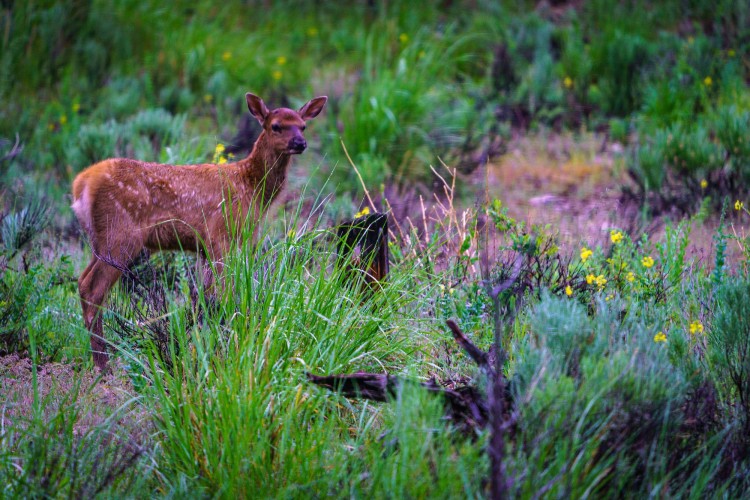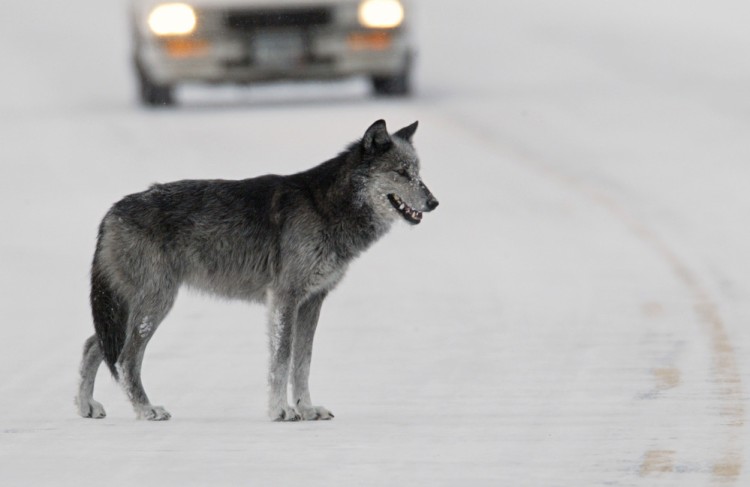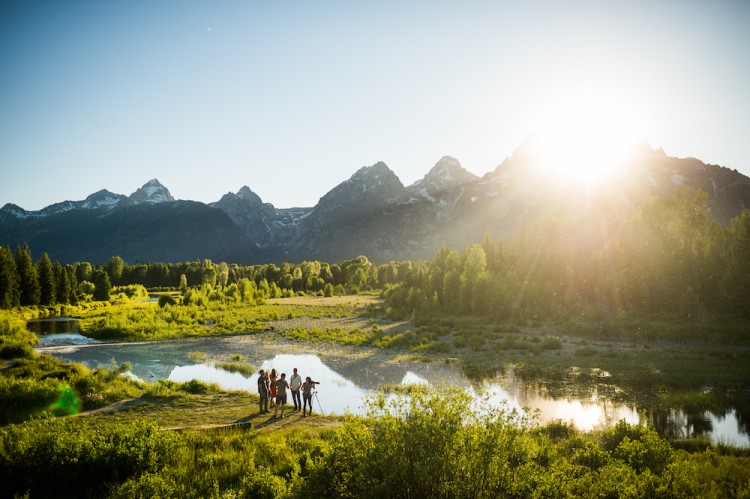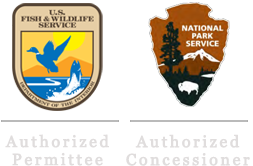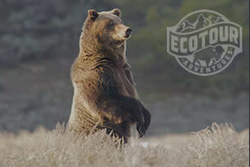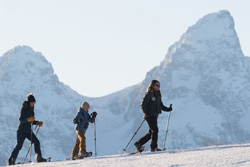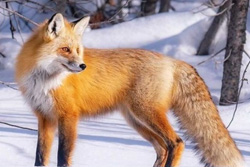Spring Migrations of Jackson Hole and the Greater Yellowstone Ecosystem
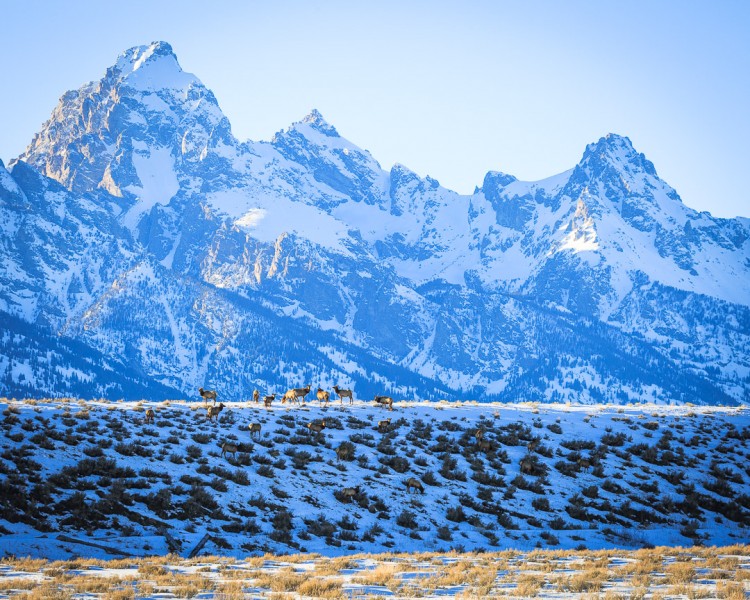

Spring is coming to Jackson Hole, Wyoming. Warm sunny days breathe life into the valleys, with melting snow revealing young tender plant growth. But with little warning, late season storms blow bitterly cold, serving as a reminder of our harsh winters. How can animals survive in such an environment? Some, grizzly and black bears, avoid winter by hibernating. All must take on adaptations to survive here. It is our great migrations however, which take center stage in the battle for survival in the Greater Yellowstone Ecosystem.
Life and Death in Winter
Winter in Wyoming both takes away and gives life. Some of the Jackson Hole Elk herd are unable to build up enough fat reserves in summer. Some are sickened by disease, or injured. They expire in the cold winds of the National Elk Refuge. Bald eagles, many who migrate here from Canada or Alaska, feed on carcasses alongside ravens, magpies, coyotes, foxes, wolves, and even chickadees! There is no waste in nature.
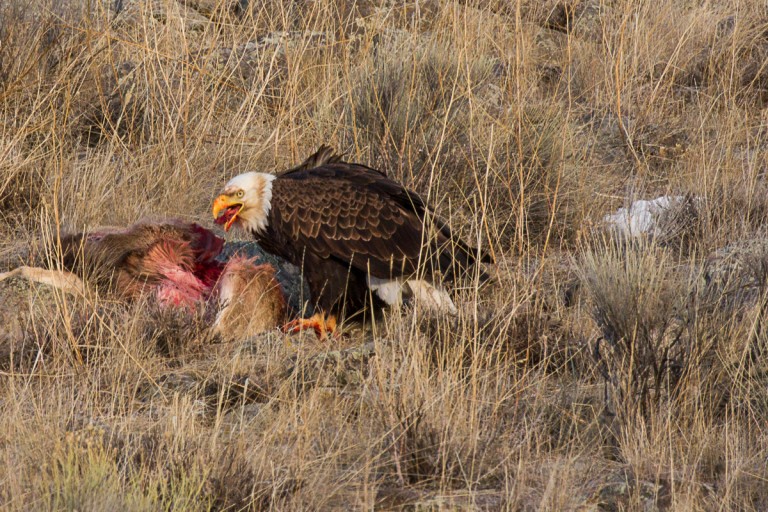
Animals return to low elevation valleys and hillsides such as the National Elk Refuge every year. Called winter range, these habitats remain relatively snow free due to solar exposure, low snow fall, and sometimes wind blowing snow away such as ridge lines. Snow in their summer range is far to deep to access food or even be able to walk. Though winter takes away life, it is also banking moisture as snows pile up, especially in the higher elevation areas wildlife thrive in summer time. Melting snows facilitate a flush of life across the ecosystem and our herbivores ride this green wave up the mountainsides.
Greater Yellowstone Migrations: Elk
Right now, elk all over Wyoming and the west are beginning their migrations. Some, like elk from the Spring Gulch area of Jackson, will travel just a few miles to the low forests of the Snake River. Others will climb the north hills of the National Elk Refuge, cross the Gros Ventre River, entering Antelope Flats of Grand Teton National Park. From here a matriarch may lead her herd of cows, calves and spikes, (two year old males), up and over Blacktail Butte. She will attempt to navigate traffic on Hwy 89 and walk them through the cottonwoods and conifers near Schwabacher landing before wading the Snake River and settling in the thick cover of lodgepole forests at the base of the Tetons. She knows this 20-40 mile route well, having walked it many times since she was first taught by her mother years before.
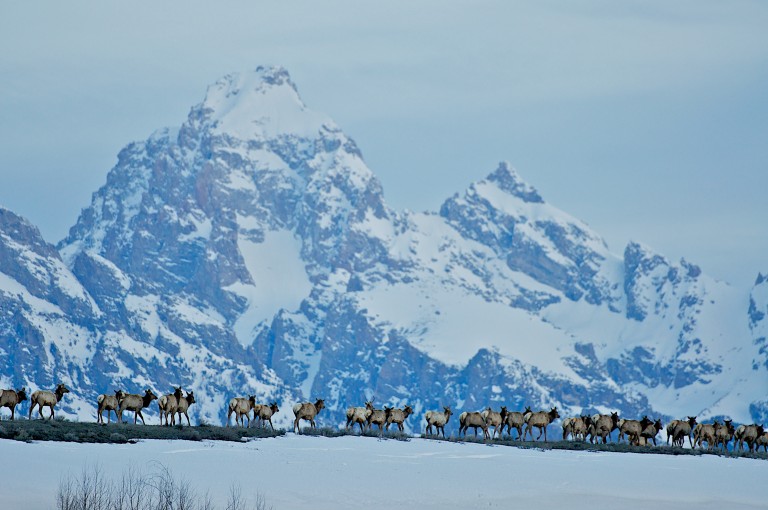
Elk from the Jackson Hole herd travel beyond the Tetons however. Some herds will enter the Teton Wilderness north of Grand Teton National Park, facing increased pressure from grizzly bears and wolves. Many will continue across the southern border of Yellowstone National Park until they reach the shores of Yellowstone Lake, traveling close to 80 miles! The high elevation of the Yellowstone Plateau is known for its abundant snowfall and these aren’t the only elk returning to feast on lush grasses growing as it melts. Researchers from the Migration Initiative have documented elk returning to the park from nearly every direction including herds from Cody, WY, the Paradise valley of Montana, and Idaho in addition to those coming from Jackson Hole.
Great Migrations Define Wyoming’s Wildlife
With our low human population of fewer than 600,000 people across the state, Wyoming is still very wild and many of our wildlife migrations are still intact. Pronghorn antelope are found across Wyoming but with the exception of a small herd are only summer residents of Grand Teton National Park. In late fall, the majority of the park herd, numbering around 350-400 animals, gathers in Antelope Flats, preparing to follow the Gros Ventre river into the Bridger-Teton National Forest, crossing the continental divide, then following the Green River down past the town of Pinedale, where they run across specially designed overpasses to prevent collisions with motor vehicles. At one hundred miles, the Path of the Pronghorn is one of the longest land migrations in North or South America and archaeologists believe it has been occurring for over 6,000 years. The Wyoming Geological Survey has more information below:
The spectacular migrations of Wyoming’s elk, pronghorn, bighorn, and deer continue to amaze us. It was only recently that biologists with the University of Wyoming stumbled upon the 2nd longest known migration route in the Americas, the Red Desert to Hoback migration. In 2011, Hall Sawyer was studying what he thought was a resident herd of the Red Desert in southern Wyoming. Collared deer ended up traveling north along the Wind River Range and up into the mountains surrounding the Hoback River, a total of 150 miles one way! This route is not an easy one, as deer must navigate oil and gas fields, cross over 100 fences and several highways, and funnel through a strip of now conserved land only 50 meters wide.
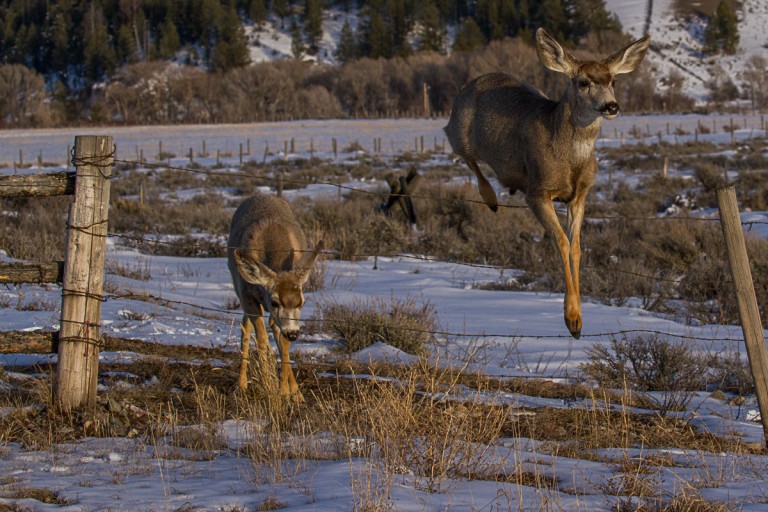
Migrations on the Wing
The Greater Yellowstone Ecosystem is home to over 200 bird species, and over two thirds of them migrate out of the area during winter. Early ornithologists, unable to effectively track birds once believed they hibernated! Then we began placing colored metal bands around the legs of birds, allowing us to identify their movements . Today we know that many birds travel into the southern U.S., central America, and some even down to South America! Despite their small size, cliff swallows are among our most impressive migrants. As insect diversity declines in fall, swallows gather in wetland areas before following summer southward. They move slowly, feeding on swarming insects along the way until they arrive as far south as Argentina.

A cliff swallow tends to its mud nest in the Lamar Valley of Yellowstone National Park.
Migrations are our Cultural Heritage
“What happens in Yucatán affects what happens in Greater Yellowstone and what happens in Greater Yellowstone affects Yucatán – and lots of other places” – Jack Turner
Naturalist Jack Turner was speaking of migrating songbirds when he penned these words in his book Travels in the Greater Yellowstone, but the same is true of all migrations, whether hoofed or winged. Elk, Pronghorn, Deer, Bighorn sheep and most of our other big game species must travel across land ownership, whether public or private to survive in the Greater Yellowstone Ecosystem. Migrations connect our National Parks to stakeholders far beyond their boundaries. They connect the citizens of Wyoming to a part of our cultural heritage, like the 6000 year old Path of the Pronghorn. May they continue for another 6000 years.

Josh Metten has spent his entire life exploring and living in the Rocky Mountains of Colorado and Wyoming. He is an Ecotour Adventures Naturalist, photographer, conservationist, and outdoor enthusiast. Josh lives in Jackson, WY.
EcoTour Adventures was created with the idea of helping people connect with the natural world through wildlife observation and natural history interpretation. We believe that when one is more familiar with the intricate workings of the ecosystem, he or she has a deeper appreciation and connection with their environment. Join us on an adventure today! 307-690-9533 info@jhecotouradventures.com




